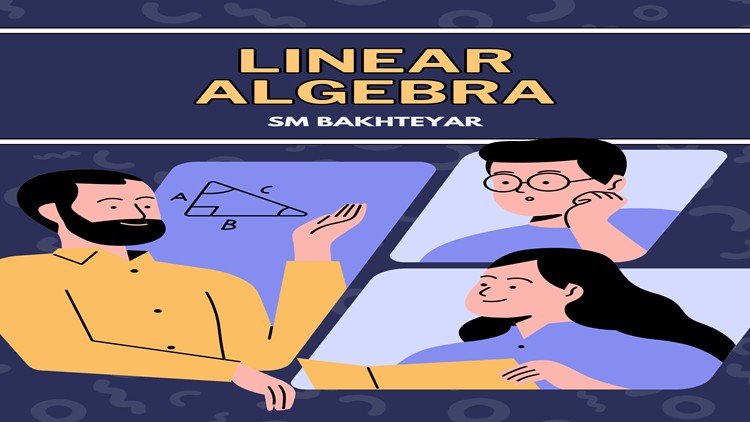Became a Linear Algebra Master
Learn everything from Linear Algebra, then test your knowledge with many practice questions

0
students
12 hours
content
Sep 2024
last update
$19.99
regular price
What you will learn
Basics of Matrices, addition and multiplication of matrices
Rank of matrix
system of linear equations AX=B, AX=0
Eigen values and Eigen vectors, Diagonalization A=PDP−1
Special matrices
LU Decompositions
Minimal Polynomial
Trace of matrix, Diagonal matrix, upper/lower/diagonal triangular matrix
Inverse of matrix, adjoint of A matrix, Co-factor matrix , transpose of matrix
shortcut to find the determinant and inverse of a matrix
determinant, inverse, adjacent, and transpose properties
Determinant of matrix A of nxn order
Row echelon form, general form of Row echelon form
consistent, in-consistent, homogeneous and non homogeneous matrices
Cramer's rule method
Gaussian elimination method, augmented matrix
system of homogeneous equations, linearly dependent and independent vectors
number of solutions, trivial and non trivial solutions, consistent and in-consistent solutions, infiniately many solutions
Cayley Hamilton theorem, shortcut method to find characteristic equations for matrices
Related Topics
5181022
udemy ID
2/26/2023
course created date
4/19/2023
course indexed date
Bot
course submited by